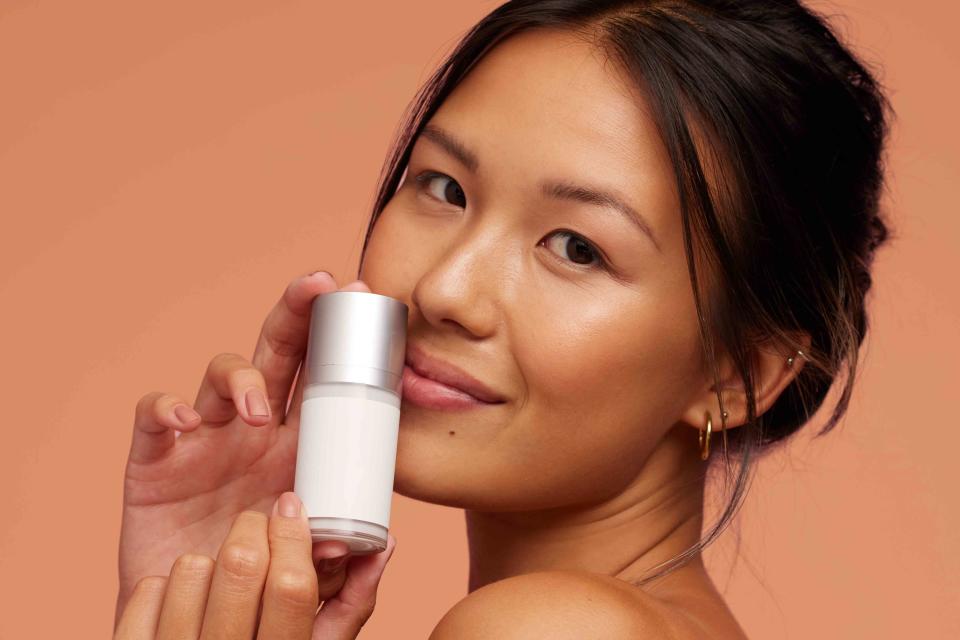What Is a Makeup Primer—and Do You Really Need One?
Makeup pros explain why they swear by using a makeup primer.

Jacob Lund/Getty Images
When we talk about primer, your mind probably wanders to a giant can of dripping house paint. Makeup primer is obviously its own thing, but it does operate similarly in the sense that it preps your skin and enhances the performance of everything you layer on top. Primers are considered an optional “bonus” makeup product—meaning you don’t technically need them to complete your look—but tons of makeup artists and beauty gurus swear by their powers.
What Does a Makeup Primer Do?
Makeup primers create a smooth and even canvas that helps your foundation, blush, and other products look more uniform and last longer. Many also boast additional benefits ranging from boosting moisture levels to minimizing the look of pores to absorbing excess oil throughout the day for a more matte look.
“In makeup, primers can help you create a more refined surface upon which you can ‘paint’ with the makeup colors you want to create your own self portrait,” explains Matthew Waitesmith, a professional makeup artist and the founder of Artis. “The primer enhances the skin surface to best partner with the next layers of makeup for the aesthetic results you want.”
When to Use A Makeup Primer
You can use a makeup primer anytime you want, but there are some key scenarios when it really comes in handy.
If Makeup Always Fades: Melissa Murdick, makeup artist for ColourPop, says that primer can come to the rescue if you find that your makeup fades or melts throughout the day.
For Big Events: Consider primer insurance on your makeup when you need it to stay put for big events like a wedding, presentation, or photographs.
When You Have Dry Skin: Those with dry or flaky skin can benefit from applying a makeup primer that moisturizes and locks in hydration.
If You Have Oily Skin: A mattifying makeup primer comes in clutch if you find yourself dealing with slick skin midday.
Your Pores Are Large: Makeup primers smooth out rough texture and minimize the look of lines and pores.
Types of Makeup Primers
You’ve got a handful of makeup primer formulas to choose from. All of them prep your skin and enhance application of additional makeup products, but different types can provide unique benefits.
Blurring
For that photo-filter effect, use a smoothing primer that creates a more blurred look and minimizes the look of fine lines, discoloration, and pores. “I personally have been using Benefit’s The POREfessional ($35, Sephora) and the Hourglass Veil Mineral Primer ($58, Sephora) for years,” Murdick says.
Mattifying
If you’ve got oily skin, Murdick says there are mattifying primers that help reduce shine by absorbing excess oil throughout the day. Check out Milk Makeup Pore Eclipse Mattifying + Blurring Makeup Primer with Niacinamide ($38, Sephora) or JOAH Super Sidekick Mattifying Primer ($11.99, Amazon).
Moisturizing
“For dry skin, there are hydrating primers that will keep the skin feeling plump,” Murdick says. “If you’re looking for an affordable option to try, get the Colourpop Pretty Fresh Hydrating Hyaluronic Acid Primer ($12, Ulta).
Glow-Boosting
Want an extra boost of glowy sheen? Murdick says to choose a product that not only boosts moisture, but offers an extra dose of radiance. We love Iconic London Underglow Blurring Primer ($30, Ulta) and Rare Beauty by Selena Gomez Illuminating Primer ($28, Sephora).
How to Apply Makeup Primer
Application is the same no matter what type of makeup primer you use. Waitesmith says to gently cleanse your skin and complete your skincare routine, including application of your toner, serum, moisturizer, and SPF. After the products have absorbed, follow up with a thin layer of your makeup primer and allow it to set a minute or two before going in with foundation and other makeup.
“Splashing or misting your skin with a little water first will usually help the primer formula glide onto the skin more easily and evenly,” Waitesmith notes. “Having that extra moisture underneath the primer helps it create a more plump and even skin texture, as well.”
If you experience makeup pilling, this is probably an indication that two products aren’t working well together. This often happens when you apply too much product, apply another product without waiting for the first to dry, and/or if you layer products that don’t “play nicely” with each other. For example, water-based and oil-based products repel each other, and some silicone-based products don’t agree with other silicone-based products.
For more Real Simple news, make sure to sign up for our newsletter!
Read the original article on Real Simple.


